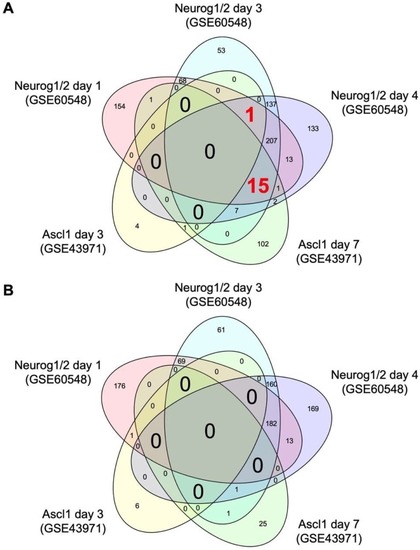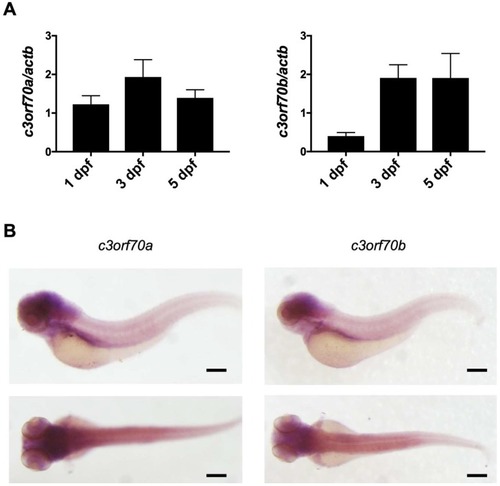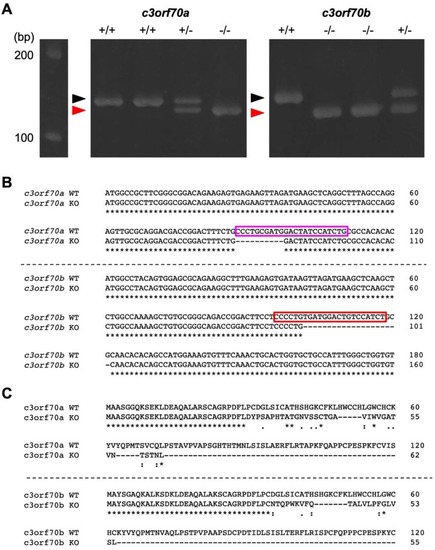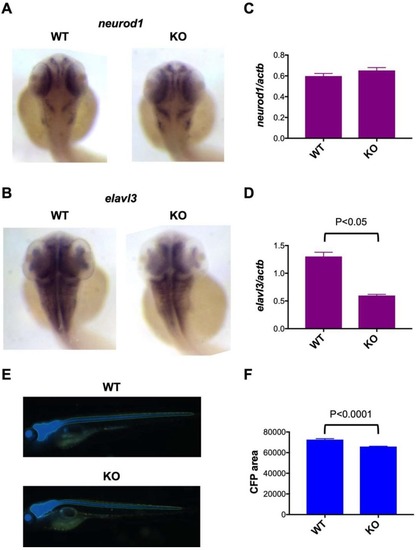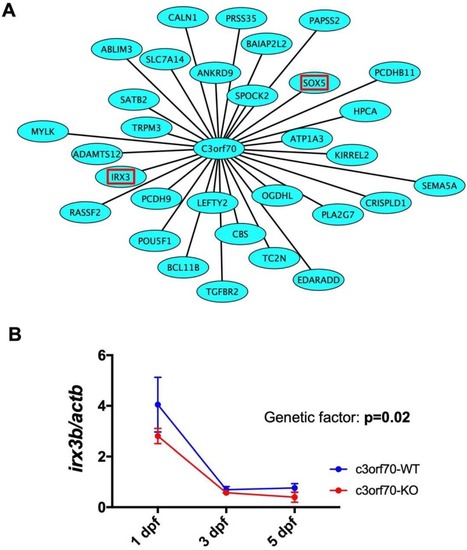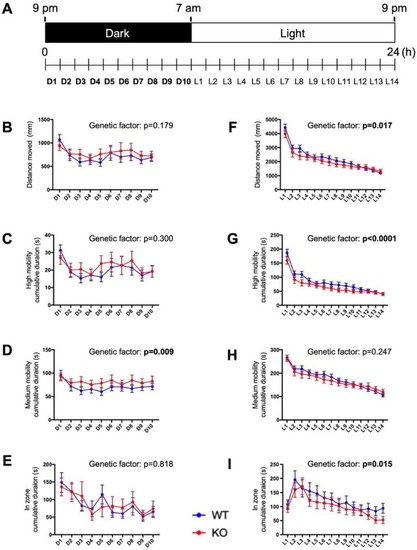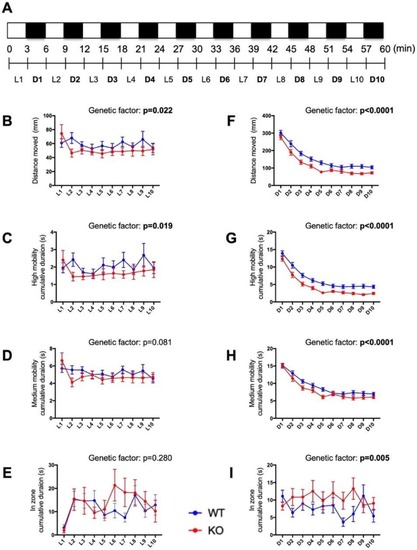- Title
-
C3orf70 Is Involved in Neural and Neurobehavioral Development
- Authors
- Ashikawa, Y., Shiromizu, T., Miura, K., Adachi, Y., Matsui, T., Bessho, Y., Tanaka, T., Nishimura, Y.
- Source
- Full text @ Pharmaceuticals (Basel)
|
Venn diagrams of the number of differentially expressed genes regulated by Neurog1/2 and Ascl1. Transcriptome data of stem cells with and without overexpression of Neurog1/2 (GSE60548) or Ascl1 (GSE43971) were downloaded from a public database. Genes differentially expressed in stem cells on days 1, 3, and 4 post-induction of Neurog1/2 overexpression versus control cells, or on days 3 and 7 post-induction of Ascl1 overexpression versus control cells were identified using a false discovery rate threshold of 10%. The number of genes increased ( |
|
Expression of |
|
Generation of c3orf70-KO zebrafish. ( |
|
Impaired neuronal marker expression in c3orf70-KO zebrafish. ( |
|
Weighted gene coexpression network analysis (WGCNA) identifies PHENOTYPE:
|
|
Impaired circadian behavior in c3orf70-KO zebrafish. ( PHENOTYPE:
|
|
Impaired behavioral responses to light–dark cycling in c3orf70-KO zebrafish. ( PHENOTYPE:
|

Unillustrated author statements PHENOTYPE:
|

